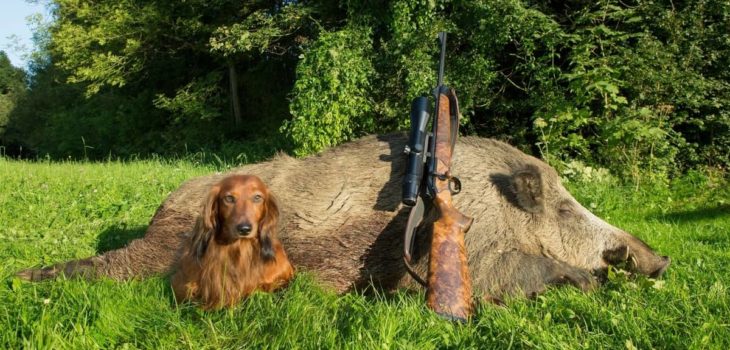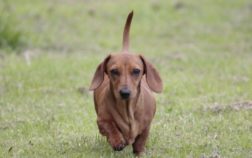Dachshunds are an incredibly popular and beloved pet breed but what were dachshunds bred to do originally and why does that matter today? Are their infamous back problems due to their initial breeding? What other health problems stem from that? Also, how do the dachshund’s origins and profession affect their personality as household pets?
What Were Dachshunds Bred To Do Originally?
Dachshunds were first bred as a scent hound hunting breed in Germany some 6 centuries ago. Their main targets were the badgers that plagued the German forests. That’s also where the dachshund’s name comes from – dachs-hund means badger hound in German. They were also used to hunt foxes and rabbits.
The dachshund used its powerful sense of smell to track such animals through the thick forests. Then, these dogs’ short legs proved excellent for them to jump into the badger or fox burrows, fight them underground, and flush them out. That’s also why the dachshund has a big and strong (for its size) chest and large paddle-like front paws – for both digging and fighting foes directly ahead of it.
Were Miniature Dachshunds Bred As Hounds Too At First?
Most miniature dog breeds were first created specifically as pets. Sometime in the 19th century, European and American folks decided not only to focus on dogs as pets but to over fixated on the smallest breeds possible as especially cute pet options. This led a lot of breeders to develop miniature versions of most larger breeds.
The miniature dachshund isn’t one of those cases, however. Mini Doxies were first developed as hunters, just as their larger dachshund brethren. The purpose of miniature dachshunds was to get inside the extra-small rabbit burrows standard dachshunds were too big for.
Still, it wasn’t long before pet owners discovered how adorable miniature dachshunds were and the breed quickly transitioned into a mostly indoor pet.

Learn more about: What Does Dachshund Mean In German?
Which Breeds Were Dachshunds Bred From?
While we know what were dachshunds bred to do, there isn’t a complete agreement on this. Many cite breeds like the Bloodhound and the Basset hound as the main ancestors of the dachshund, together with a wide range of miniature pointers and pinschers. The German breeders of the 15th century didn’t exactly write down all the breeds they used, unfortunately.
However, one thing is clear – dachshunds weren’t just a mix of other breeds. Instead, they were also selected for the chondrodysplasia gene, i.e. dwarfism. That’s because the German breeders specifically wanted a short-legged breed even if they had to deal with some of the dwarfism-accompanying health problems.
How Much Is The Dachshund’s Behavior As A Pet Influenced By Its Original Role As A Hound?
A lot of it, without a doubt. Dachshunds are a quintessential scent hound breed even if many people associate Bloodhounds and Bassets more with this archetype. Like those two, dachshunds are incredibly scent-driven, willful, and single-minded once they spot something they perceive as prey.
This makes them a bit harder to train than the shepherd and gun dog breeds, however, it doesn’t make dachshunds any less smart – just with a different temperament. Obedience training and socialization are still important, of course, but a dachshund can easily be a perfect social and interactive pet with the right upbringing.
How Much Is The Dachshund’s Health Today Affected By The Way It Was Bred?
Dachshunds are infamous for their back and joint problems, namely their predisposition for Intervertebral Disc Disorder (IVDD), Hip Dysplasia, and other such issues. While most of the dwarfism-related health problems dachshunds originally had were bred out of the breed, you will still need to watch out for stuff such as IVDD.
So, What Were Dachshunds Bred To Do and Should That Matter To Pet Owners Today?
Doxies may not look like fierce hunters to most people but that’s exactly what they were bred to be and what many of them still are in Europe. Bred specifically to be the most effective hunting dog possible against badgers, foxes, and rabbits in the thick forests of Germany, dachshunds still retain their sharp noses, their love for digging, and their headstrong attitude.
None of this makes them any less awesome as pets, however. As they were bred to live and work alongside people, dachshunds are also smart, social, and lovable animals. They can get along with other animals too, just make sure not to get any pet rabbits to live with them.
FAQs
[rank_math_rich_snippet id=”s-c3e58a8f-d0be-4ec5-88cf-d9135117ec46″]




